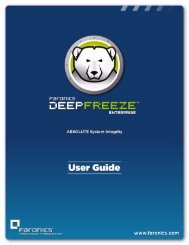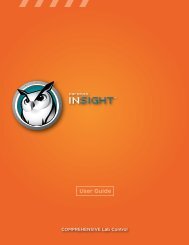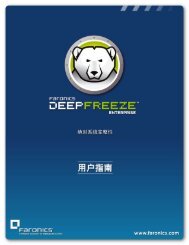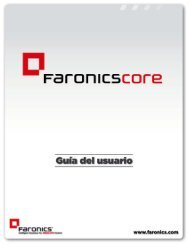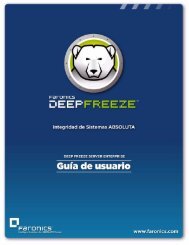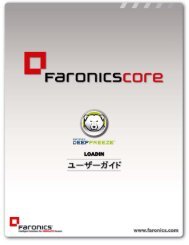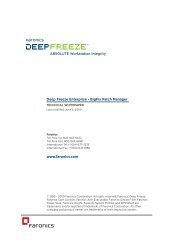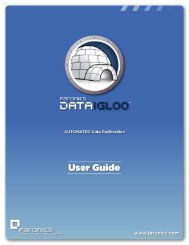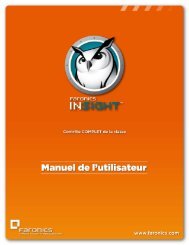Deep Freeze Enterprise User Guide - Faronics
Deep Freeze Enterprise User Guide - Faronics
Deep Freeze Enterprise User Guide - Faronics
Create successful ePaper yourself
Turn your PDF publications into a flip-book with our unique Google optimized e-Paper software.
Appendix A Ports and Protocols<br />
The key to setting up the <strong>Deep</strong> <strong>Freeze</strong> architecture is knowing which ports to use. The important<br />
factor is knowing which ports are in use on the network and using ports that will not conflict with<br />
those. The default port, 7725 has been officially registered to <strong>Deep</strong> <strong>Freeze</strong>.<br />
The following three components make up the <strong>Deep</strong> <strong>Freeze</strong> architecture:<br />
• Client (with seed installed)<br />
• Remote Console (local service enabled)<br />
• Console (connects to the Remote Console)<br />
As long as the clients and Remote Console connection use the same port there should not be any<br />
port conflicts between the different components:<br />
Ports can also be used to divide the clients. If the local service is setup to run three ports (7725,<br />
7724 and 7723), <strong>Enterprise</strong> Consoles can connect to the three different ports to see a different set<br />
of clients under each port.<br />
In the diagram above, the client(s) use both the TCP and UDP protocols to communicate with the<br />
Remote Console. The Console(s) that connects to the Remote Console uses only the TCP protocol<br />
to communicate with the Remote Console. It is important to remember the ports and protocols<br />
being used in order to prevent firewalls, switches or routers from blocking them.<br />
<strong>Deep</strong> <strong>Freeze</strong> <strong>Enterprise</strong> <strong>User</strong> <strong>Guide</strong><br />
| 101



